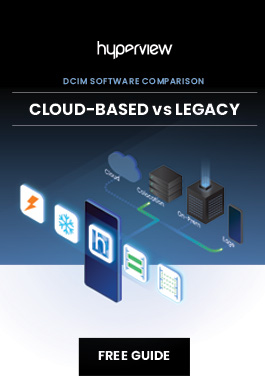Safeguarding Data Centers Against Growing Cyber Threats
As we continue to rely on digital technology to store and process vast amounts of data, the need for robust data center security has never been more critical. Cyber threats are constantly evolving, making the task of safeguarding the data and infrastructure housed within data centers increasingly challenging. Here, we’ll explore the importance of data center security and discuss strategies to protect both the physical infrastructure and the valuable data it contains.
The Growing Significance of Data Center Security
Data centers are the backbone of our digital world, providing the necessary infrastructure to support the growing demand for data storage and processing. As more businesses and organizations move their operations online, the value of the data stored in these facilities has increased exponentially. Consequently, data centers have become attractive targets for cybercriminals looking to exploit vulnerabilities and gain unauthorized access to sensitive information.
In addition to the risks posed by cyberattacks, data centers must also contend with the potential for physical security breaches. Unauthorized access to the facility, theft or damage to equipment, and natural disasters can all pose significant threats to the operation and integrity of a data center.
Securing the Physical Infrastructure
Protecting the physical infrastructure of a data center is the first line of defense against potential threats. This involves implementing a combination of security measures, such as:
Access Control: Limit access to the data center by implementing strict access control policies, including the use of key cards, biometric authentication, and multi-factor authentication for entry.
Surveillance Systems: Install robust video surveillance systems, both within and outside the facility, to monitor and record activity in real-time.
Security Personnel: Employ trained security guards to patrol the premises and respond to potential threats or incidents.
Perimeter Security: Establish secure boundaries around the data center, such as fences, walls, or barriers, to prevent unauthorized access.
Disaster Preparedness: Develop and regularly test disaster recovery plans and ensure that the facility is designed to withstand natural disasters such as floods, fires, and earthquakes.
Safeguarding the Data
In addition to securing the physical infrastructure, data center security also involves protecting the data itself from unauthorized access, corruption, or loss. This can be achieved through the following methods:
Encryption: Encrypt data both at rest and in transit to prevent unauthorized access and ensure that even if data is intercepted, it remains unreadable.
Access Management: Implement strict access controls to limit the number of personnel with access to sensitive data, and regularly review and update these permissions.
Firmware Management: Keeping firmware up-to-date is vital considering the many servers, storage, and network devices typically found in the data center. Out-of-date firmware presents a significant vulnerability that can be exploited by cybercriminals, creating unnecessary havoc.
Regular Security Assessments: Regularly assess the security of the data center by conducting vulnerability scanning and penetration testing to pinpoint and resolve any possible weaknesses in the security posture.
Incident Response Plan: Establish a comprehensive incident response plan to quickly detect, contain, and mitigate security incidents, minimizing the potential impact on the data center and its clients.
Employee Training: Provide ongoing security awareness training to all personnel, ensuring that they are well-versed in recognizing and responding to potential security threats.
Conclusion
As the demand for data storage and processing continues to grow, so too does the need for robust data center security measures. By implementing a multi-layered approach that protects both the physical infrastructure and the data it houses, data centers can stay one step ahead of the evolving threat landscape, ensuring the safety and integrity of the valuable information they manage.
Stay on top of firmware updates with the Control add-on feature. Schedule a free one-on-one demo of Hyperview today.
If you would like to learn more about the difference between SaaS and on-premises DCIM softwares, download this free guide.

The post Safeguarding Data Centers Against Growing Cyber Threats appeared first on Hyperview.
*** This is a Security Bloggers Network syndicated blog from Hyperview authored by Rajan Sodhi. Read the original post at: https://www.hyperviewhq.com/blog/safeguarding-data-centers-against-growing-cyber-threats/





